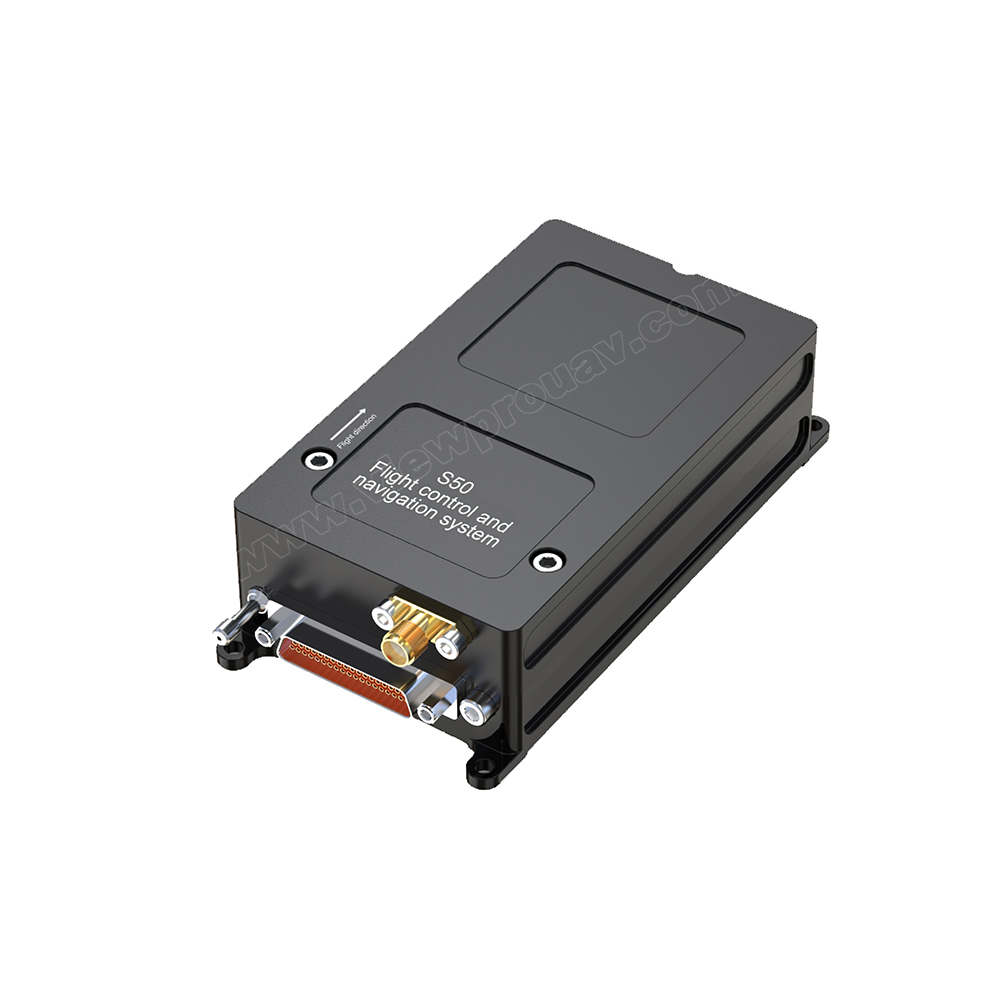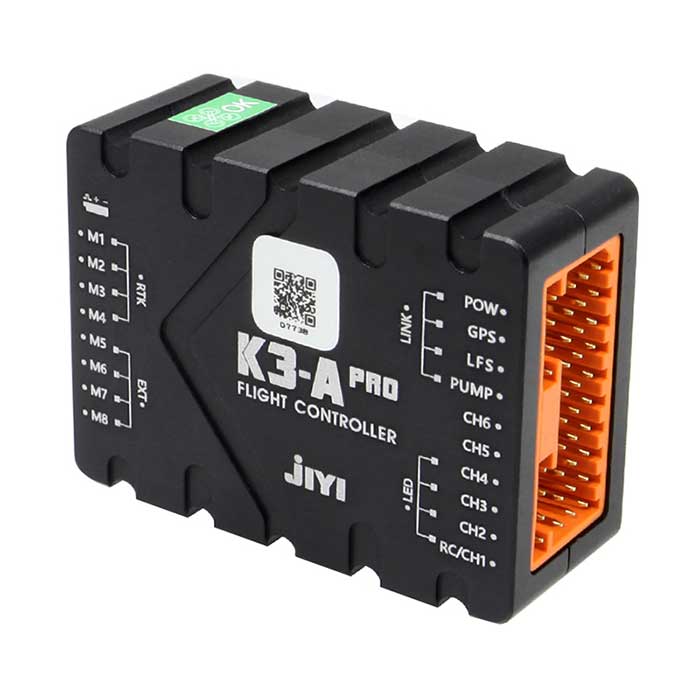Why Pick SparkNavi Drone Flight Controller and GNSS/INS Made in Taiwan for Advanced Navigation
Why Pick SparkNavi Drone Flight Controller and GNSS/INS Made in Taiwan for Advanced Navigation
Blog Article
The Importance of Drone Flight Controllers in Modern Aerial Modern Technology: Key Parts and Their Impact
In the realm of modern airborne innovation, drone flight controllers offer as the essential systems that coordinate a drone's performance and capacities. These sophisticated systems integrate vital parts such as microcontrollers and GPS modules, assisting in stability and precision in trip procedures. Their function is especially pronounced in self-governing functions, where innovative formulas boost navigation and obstacle avoidance. As markets progressively depend on drones for applications varying from agriculture to monitoring, the advancing technology within flight controllers raises critical concerns about their future impact and prospective improvements. What technologies exist ahead that could redefine our understanding of drone abilities?

Introduction of Drone Flight Controllers
In the realm of airborne innovation, drone trip controllers serve as the crucial brain of unmanned airborne cars (UAVs), enabling accurate ability to move and stability during trip. These innovative systems integrate sensing unit information, processing algorithms, and control inputs, allowing drones to implement complex trip patterns with precision.
Drone trip controllers use various sensing units, such as gyroscopes, accelerometers, and GPS components, to analyze the UAV's alignment and position in real-time. This info is necessary for keeping balance and making sure secure procedure in varied ecological problems. The controllers process this data to make rapid modifications to the drone's motors, allowing for smooth transitions and responsive handling.
Furthermore, flight controllers are furnished with sophisticated software program that supports attributes such as waypoint navigation, barrier evasion, and independent flight capacities. This software program is important for both business and leisure applications, where integrity and accuracy are extremely important. As drone technology remains to breakthrough, the advancement of flight controllers will certainly play a critical duty in boosting UAV performance, safety and security, and versatility, inevitably increasing their applications throughout different industries.
Secret Elements Explained
Comprehending the fundamental components of drone flight controllers is crucial for realizing just how these systems run properly. At the heart of a flight controller is the microcontroller, which acts as the brain, refining data from various sensors and performing commands. Essential sensors consist of accelerometers and gyroscopes, which gauge the drone's positioning and movement, providing vital responses for stabilization.
Another secret element is the measure, which evaluates elevation by gauging atmospheric pressure, while GPS modules use positional information, enabling self-governing navigation - SparkNavi drone flight controller and GNSS/INS made in taiwan. The trip controller additionally interfaces with Digital Rate Controllers (ESCs), which manage the speed of the drone's motors based on the controller's commands
Communication modules, such as radio receivers, help with push-button control input, enabling drivers to send out commands in real-time. Furthermore, some flight controllers integrate software application that can manage intricate formulas for waypoint navigation, flight planning, and telemetry data analysis.
Duty in Flight Security
Central to preserving trip security, drone flight controllers utilize innovative formulas to process sensor data and make real-time adjustments. These controllers are geared up with a range of sensors, consisting of measures, accelerometers, and gyroscopes, which continually monitor the drone's elevation, orientation, and rate. By interpreting this data, the flight controller can identify variances from the wanted flight course and respond promptly to maintain security.
For instance, if a drone experiences an website link unexpected gust of wind, the trip controller can swiftly change the electric motor rates to neutralize the disruption, making certain a constant trip trajectory. This capacity is important not only for hand-operated flight procedures yet likewise for performing intricate maneuvers and preserving smooth flight in different environmental conditions.
.png)
Furthermore, the advanced algorithms utilized in flight controllers, such as PID (Proportional-Integral-Derivative) control, enable fine-tuning of the drone's action to changes in trip conditions. By maximizing these control parameters, trip controllers can improve security, boost responsiveness, and decrease pilot work. Eventually, the duty of trip controllers in ensuring trip security is important for the efficient and safe operation of modern-day drones across diverse applications.
Impact on Autonomous Operations

Autonomous operations are specifically critical in diverse applications such as delivery, security, and agriculture solutions. With enhanced trip controllers, drones can autonomously navigate established courses, successfully gather information, and adjust to vibrant atmospheres. This capability reduces the requirement for constant human oversight, therefore enhancing functional effectiveness and security.
Furthermore, the application of artificial intelligence strategies within flight controllers allows drones to enhance their performance with time by picking up from previous goals. This flexibility leads the way for a lot more advanced self-governing applications, such as flock innovation, where numerous drones collaborate their activities to achieve an usual goal.
Future Trends in Trip Controllers
Advancements in flight controller technology are poised to change drone capabilities in the coming years. One significant pattern is the assimilation of man-made knowledge (AI) and device learning algorithms, allowing drones to learn from their settings and make real-time decisions. This development will enhance self-governing navigating, obstacle evasion, and mission preparation, considerably improving functional effectiveness and safety.
In addition, the browse this site development of sophisticated sensing unit innovations, such as LiDAR and multispectral imaging, will give flight controllers with richer data inputs. This will assist in much more sophisticated logical capacities, enabling drones to perform complicated tasks, such as precision rescue, farming and search, and framework examinations with unmatched precision.
One more arising pattern is the miniaturization of flight controller elements, which will certainly cause lighter and extra compact drones. This development will certainly expand flight durations and haul capacities, making drones more functional for numerous applications.
Verdict
To conclude, drone flight controllers serve as necessary components in modern-day aerial technology, making sure stability and precision in maneuverability with the integration of microcontrollers, accelerometers, and GPS modules. SparkNavi drone flight controller and GNSS/INS made in taiwan. Their ability to make it possible for self-governing procedures and adjust to various applications emphasizes their significance throughout numerous industries. As improvements in artificial knowledge and sensor innovation remain to emerge, the potential for boosted abilities and boosted functional effectiveness in drone systems will likely reshape the future of airborne applications
Central to preserving trip stability, drone trip controllers utilize advanced formulas to refine sensor data and make real-time changes. By interpreting this data, the trip controller can determine discrepancies from the preferred flight course and react without delay to preserve stability.
Furthermore, the sophisticated algorithms used in flight controllers, such as PID (Proportional-Integral-Derivative) control, permit for fine-tuning of the drone's reaction to changes in trip conditions. Ultimately, the role of flight controllers in guaranteeing trip security is essential for the safe and effective operation of modern-day drones across diverse applications.
The developments in drone flight controllers not only improve trip stability but also substantially influence independent procedures. SparkNavi drone flight controller and GNSS/INS made in taiwan.
Report this page